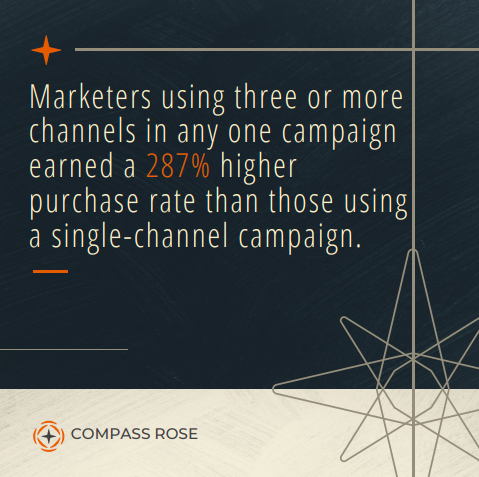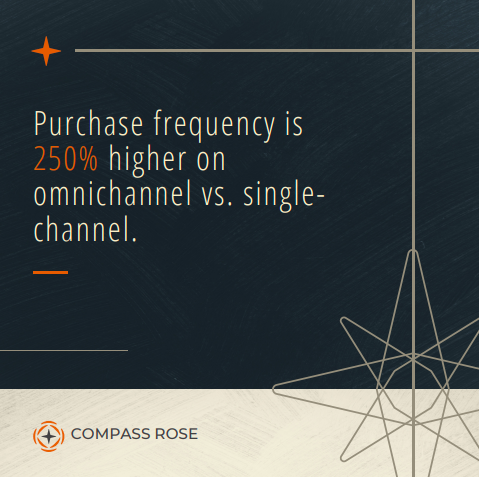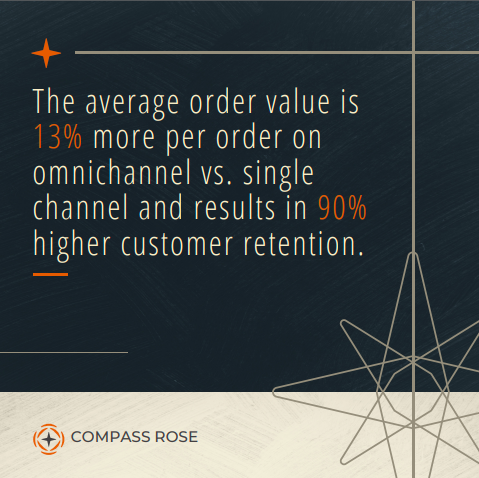Did you know marketers leveraging three or more channels in a single campaign achieve a whopping 287% higher purchase rate?
Or does adding SMS to your omnichannel mix increase conversions by 47.7%? It’s time to capitalize on the undeniable power of omnichannel marketing to supercharge your DTC brand.
Four-step growth roadmap for omnichannel success
Seamless customer experience across channels
Invest in integrating all online and offline customer touchpoints to provide a consistent and personalized experience. Focus on mobile optimization, as it’s become an indispensable part of the customer journey. By creating a seamless flow between physical and digital channels, your brand engages with customers wherever they prefer to shop. Ensure branding and messaging are consistent across all platforms. It will reinforce brand recognition and trust. Streamlining the transition between channels enhances customer satisfaction and loyalty.
Data-driven insights for better decision-making
Harness the power of data and analytics to gain insights into customer behavior, preferences, and trends. Use this information to optimize your marketing efforts and tailor your offerings to customer needs.
Leverage predictive analytics to forecast trends and customer behaviors. It will help to make proactive adjustments in your marketing strategies. Monitor and measure the effectiveness of different channels and campaigns and create well-thought-out strategies in response to real-time feedback and results to maximize ROI. Below are some of the example tools for predictive analytics –
| Tool Name | Description | Main Features |
|---|---|---|
| SAS Advanced Analytics | Statistical analysis and machine learning. | Statistical modeling, data mining. |
| IBM SPSS Modeler | Predictive analytics without programming. | Drag-and-drop interface, automated modeling. |
| Microsoft Azure Machine Learning Studio | Cloud-based predictive analytics. | Collaborative tools, scalable cloud infrastructure. |
| RapidMiner | Integrated data science platform. | Data prep, machine learning, text mining. |
| Tableau | Data visualization and analytics. | Visual analytics, interactive dashboards. |
| Alteryx | End-to-end data analysis platform. | Data blending, advanced analytics. |
| Google Cloud AI Platform | Machine learning on Google Cloud. | AI tools, large-scale data handling. |
| Knime | Open-source data integration. | Modular data pipelining, easy to use interface. |
Leveraging technology for real-time inventory management
Integrate your inventory systems across channels to ensure accurate, real-time information is available to customers. This will prevent stockouts and overstocks and promote a better overall shopping experience. Utilize advanced technologies such as AI and IoT to improve inventory accuracy and efficiency. It will enhance the customer shopping experience and help optimize supply chain operations, reducing costs and improving service levels.
- Real-Time Stock Updates: Prevents stockouts and overstocks. 78% of customers avoid retailers after out-of-stocks (NRF).
- Enhanced Accuracy: AI reduces forecasting errors by 30-50% (McKinsey).
- Cost Reduction: Poor inventory management costs $123.4B in overstocks and $1T in out-of-stocks annually (IHL Group).
- Operational Efficiency: IoT reduces operational costs by up to 20% (Deloitte).
- Inventory Savings: Predictive analytics cuts costs by 25% (Supply Chain Quarterly).
- Customer Satisfaction: 88% of consumers prefer real-time inventory visibility (Zebra Technologies).
- Service Levels: Retailers report a 10-20% increase in service levels with advanced systems (Gartner).
Personalization and targeted marketing
Collect customer data and utilize it to deliver personalized content, offers, and recommendations. Improve customer engagement using segmentation and machine learning to fine-tune your marketing messages. This allows for more effective targeting, increases the relevance of your communications, and drives higher conversion rates.
I work with clients of pet, beauty, or vitamins and supplements to unlock higher purchase frequency, order value, and customer retention to prepare your business for investors.
Which step presents the biggest challenge for brands in the DTC space?





